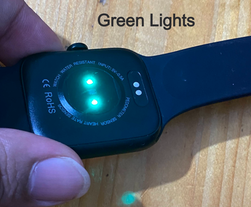An invention Wearable and asset tracking with positioning accuracy from u‑blox
- Subir Biswas

- Dec 5, 2020
- 2 min read
Updated: Jan 5, 2021
u‑blox is a global technology leader in positioning and wireless communication in automotive, industrial, and consumer markets working over 20 years. They have good reliable solutions for GNSS market. Their services and products let people, vehicles, and machines determine their precise position and communicate wirelessly over cellular and short-range RF networks.
Today a bit of information about the Global GNSS market.
u‑blox brings a robust ultra-low power positioning accuracy to wearables and asset tracking. This was announced on November 5, 2020, in the press release. The announcement is for u‑blox M10 chip. This is the latest highly integrated GNSS (global navigation satellite system) platform designed for ultra-low power high-performance positioning applications. u‑blox M10 defines a new level of positioning performance in a wide range of applications with very long battery life such as
Sport watches
Asset trackers
Livestock trackers
u‑blox M10 is designed to consume 12mW in continuous tracking mode which makes it ideal for battery-powered applications. u‑blox M10’s enhanced RF sensitivity also cuts the time it takes for the platform to achieve a first position fix when initialized, further reducing systemic power consumption. And switching to the improved Super-E mode can extend battery life even more.

Image Source: u-blox website (4.0 x 4.0 x 0.55 mm)
Imagine the size of the chip from the above image. Here are a few features
Less than 12 mW power consumption without compromising GNSS performance
Maximum position availability with concurrent reception of 4 GNSS
Proven excellent performance, even with small antennas
Advanced spoofing and jamming detection
Supported by AssistNow
The u‑blox M10 platform benefits from u‑blox’s experience in building robust GNSS receivers, incorporating proven techniques for detecting spoofed signals through the analysis of raw GNSS data, jamming-detection strategies, and embedded filters to mitigate the effects of in-band RF interference.


























Comments